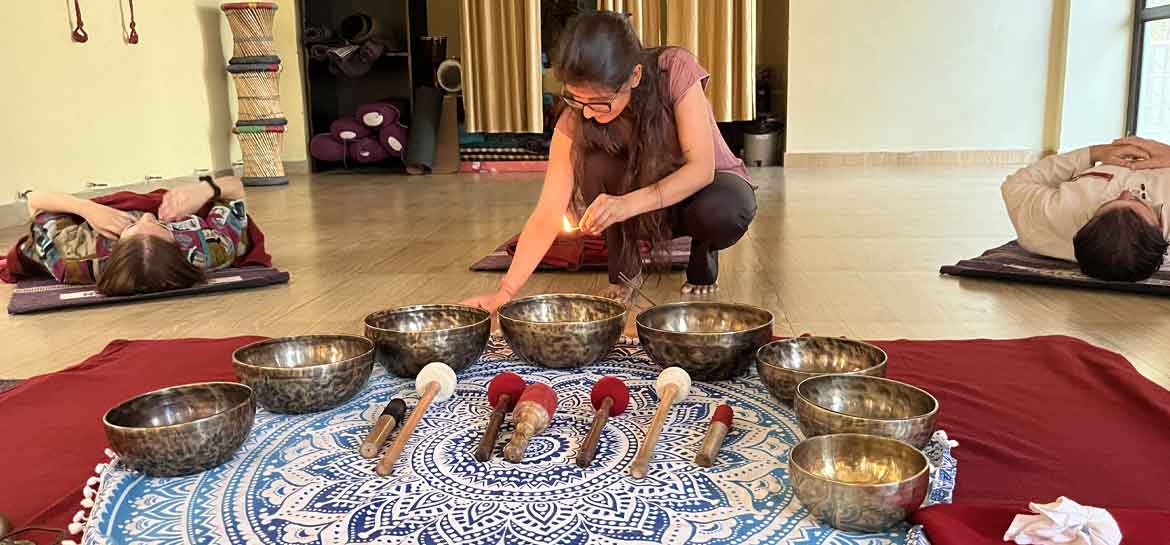What is Ashtanga Yoga?
"Ashta" means "Eight" and "Anga"
means
"Limbs" forming the meaning of "Ashtanga Yoga" as
the "Eight
Limb Approached Yoga". These Eight Limbs described by Patanjali Yoga
Sutras are:
1. Yama:
Yama refers to Abstinences. It teaches us sobriety and ethical standards. The five Yamas
are
- Ahimsa:
Non-violence
- Satya:
Truth
- Asteya:
Non-stealing
- Brahmacharya: Celibacy
- Aparigraha:
Non-covetousness
2. Niyamas:
Personal rules. The rules you follow for yourself like self-discipline and
self-observances is the
second limbs of yoga.
Sutra 32 of Chapter 2 of Patanjali Yoga Sutras defines the five
niyamas, we
should practice.
शौचसंतोषतपःस्वाध्यायेश्वरप्रणिधानानि नियमाः॥
Meaning:
The five niyamas (observances) are
- Shaucha -
Internal and
External Purification
- Santosha -
Contentment
- Tapah -
Austerity
- Svadhyay -
Self Study
- Ishvara Pranidhanani
-
Devotion to God
3. Asanas :
Asanas refers to Physical Postures. Not all physical postures are
asanas, as per
Patanjali Yoga Sutras 46 of Chapter 2
Meaning:
Asanas are those physical postures which are steady and Comfortable
Asanas prepare the body for yoga practice, meditation, pranayama, dhyana and other
spiritual aspects.
It is the beginning of learning yoga.
4. Pranayama:
Pranayama refers to Breath Control. It is the combination of two words, "Prana" means
"Life Force, i.e.
Breath" and "Yama" means "Control". As per the Patanjali Yoga Sutras, Retention and
Splitting of breath
in the proper way is termed as Pranayama.
5. Pratyahara :
Pratyahara refers to the withdrawal of senses. The stage when your mind or the senses
stop engaging
with the external environment, indeed, turned it towards the inner consciousness. With
this, it becomes
easier to control the senses.
The human body has "Pancha Kosha" or five layers building the inner
consciousness,
these are
- Annamaya Kosha
- the food
layer
- Pranamaya Kosha -
the
breath layer
- Manomaya Kosha
- the mind
layer
- Vijnyanmaya Kosha
- the
intellect layer
- Anandamaya Kosha
- the
bliss layer
6. Dharana :
Dharana refers to Concentration. Our mind is fickle, it changes frequently. With the
practice of
Dharana, one becomes able to pay attention to one particular thing or aspect. This can
be done with the
practice of Mantra Chanting or Meditation.
7. Dhyana :
Dhyana refers to Meditation. In this, your mind remains still and you achieve deep rest
and relaxation.
8. Samadhi :
Samadhi refers to Contemplation. The last or the ultimate stage of Consciousness, where
you will only
be aware of your thoughts and powers. You connect to your true nature, true nature of
love, joy and
strength.
When a person connected the four external limbs, the other four spontaneously evolves.













